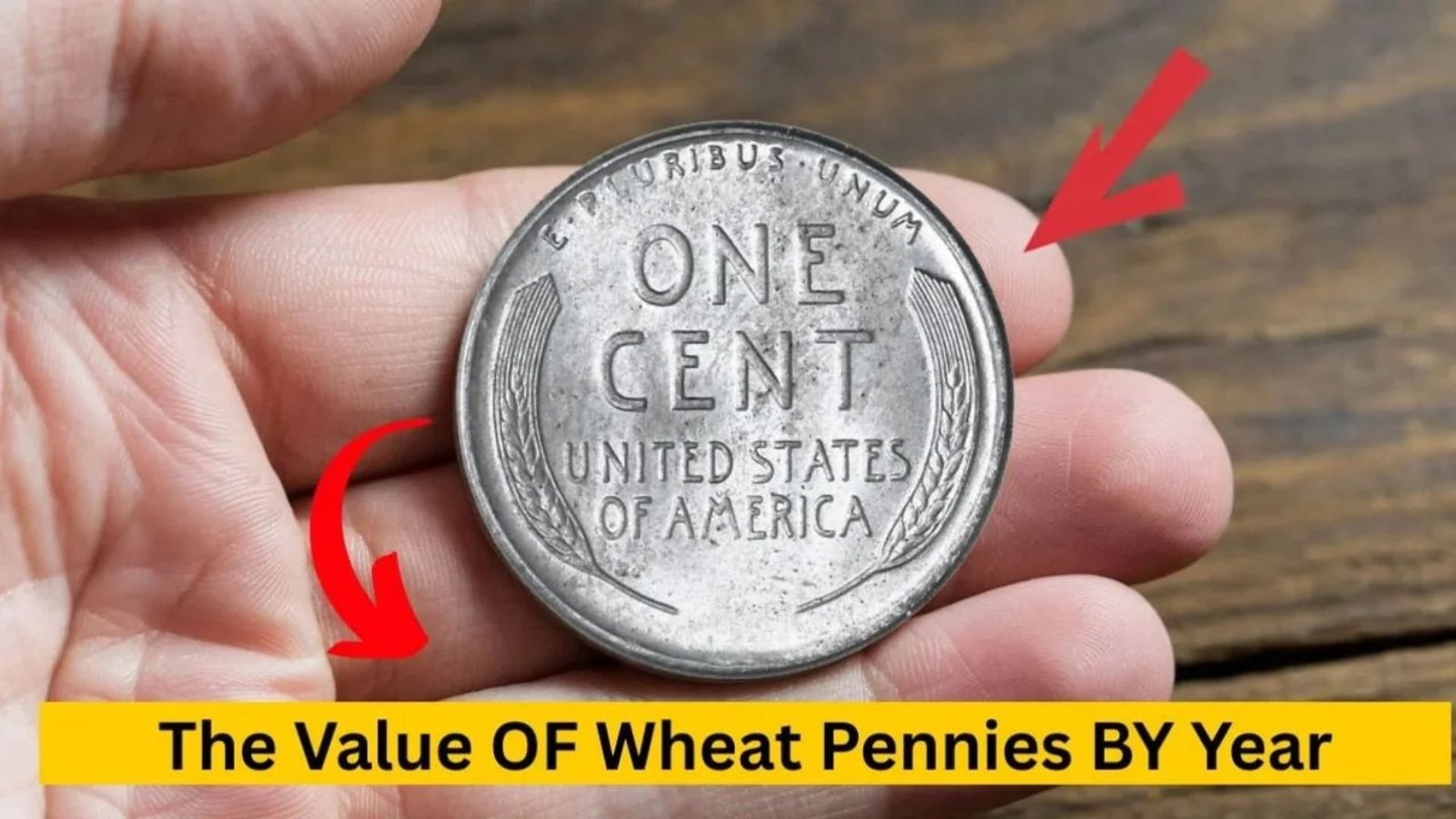Wheat pennies, also called Lincoln Wheat Cents, are a favorite among coin collectors due to their history and potential value. Minted from 1909 to 1958, these pennies feature Abraham Lincoln on the front and two wheat stalks on the back. If you’re new to collecting or a seasoned enthusiast, this guide will help you understand the value of wheat pennies by year, key factors affecting their worth, and tips for starting your collection. Let’s dive into this exciting world of numismatics in simple terms!
What Are Wheat Pennies?
Wheat pennies are U.S. one-cent coins produced by the United States Mint between 1909 and 1958. Designed by Victor David Brenner, they were the first coins to feature President Abraham Lincoln. The “wheat” name comes from the two wheat stalks on the reverse side, symbolizing agriculture. These coins are popular because some years and varieties are rare, making them valuable to collectors.
Why Are Wheat Pennies Valuable?
The value of a wheat penny depends on several factors:
- Year of Minting: Some years had lower production, making those coins rarer.
- Mint Mark: Coins have a small letter (like “D” for Denver or “S” for San Francisco) showing where they were made. No mark means Philadelphia.
- Condition: Coins in better condition (less wear) are worth more.
- Rarities and Errors: Some pennies have unique errors, like double stamping, increasing their value.
Wheat Penny Values by Year
Below is a table summarizing the approximate value of wheat pennies by year based on average circulated condition (good to fine) and uncirculated condition (mint state). Prices are estimates for 2025 and may vary based on market trends and coin condition.
| Year | Mint Mark | Circulated Value | Uncirculated Value | Notes |
|---|---|---|---|---|
| 1909 | None | $3–$10 | $50–$200 | First year, high demand |
| 1909 | S | $80–$200 | $400–$1,000 | Rare, low mintage |
| 1909-S VDB | S | $600–$1,200 | $2,000–$5,000 | Iconic, designer’s initials |
| 1914 | D | $150–$500 | $2,000–$10,000 | Very rare |
| 1922 | None | $500–$1,500 | $10,000+ | No “D” mint mark error |
| 1931 | S | $50–$150 | $200–$500 | Low mintage |
| 1943 | None (Steel) | $0.10–$0.50 | $5–$50 | Steel due to WWII |
| 1943 | Bronze | $100,000+ | $1,000,000+ | Extremely rare error |
| 1944 | D/S | $50–$150 | $500–$2,000 | Mint mark error |
| 1955 | None (Doubled Die) | $800–$1,500 | $10,000–$25,000 | Famous error |
Note: Values are approximate and depend on coin grade. Always consult a professional appraiser for exact pricing.
Key Years to Watch For
1909-S VDB
This penny is a collector’s dream. Only 484,000 were made in San Francisco, and it features the designer’s initials (VDB). Even in average condition, it’s worth hundreds of dollars.
1914-D
With a low mintage of 1.2 million, the 1914-D penny from Denver is scarce. In good condition, it can fetch a high price, especially if uncirculated.
1922 No “D”
A famous error coin, the 1922 penny without a “D” mint mark is highly sought after. The Denver Mint produced it, but the mint mark was missing, making it a rare find.
1931-S
Minted during the Great Depression, only 866,000 of these were made, making them valuable, especially in mint condition.
1943 Bronze
During World War II, pennies were made of steel to save copper. A few bronze pennies were accidentally minted in 1943, making them incredibly rare and valuable.
1955 Doubled Die
This error coin has a noticeable doubling in the date and lettering. It’s one of the most famous wheat penny errors and can be worth thousands.
Factors Affecting Wheat Penny Value
Condition (Grade)
The condition of a penny is graded on a scale from Poor (P-1) to Mint State (MS-70). Coins with less wear, sharp details, and original luster are worth more. Professional grading services like PCGS or NGC can certify a coin’s condition.
Rarity
Coins with low mintage numbers (fewer coins produced) are harder to find and more valuable. For example, the 1909-S VDB and 1931-S had low production runs.
Mint Errors
Errors like doubled dies (where the design is stamped twice) or missing mint marks can significantly increase a coin’s value. The 1943 bronze penny is a prime example.
Market Demand
Collector demand can drive prices up, especially for key dates or error coins. Trends in the numismatic market also affect values.
How to Start Collecting Wheat Pennies
- Learn the Basics: Research key dates, mint marks, and errors to know what to look for.
- Check Your Change: Some wheat pennies still circulate, so check pocket change or old coin jars.
- Buy from Reputable Sources: Purchase from trusted dealers, auctions, or coin shows to avoid fakes.
- Store Properly: Use coin albums or holders to protect your pennies from damage.
- Get Coins Graded: For valuable coins, professional grading ensures authenticity and value.
Where to Find Wheat Pennies
- Coin Shops: Local or online dealers often sell wheat pennies.
- Online Marketplaces: Websites like eBay or Heritage Auctions offer a wide selection.
- Coin Shows: Attend events to meet dealers and collectors.
- Family Collections: Check with relatives for old coins stored away.
Tips for Evaluating Wheat Pennies
- Use a Magnifying Glass: Look for mint marks, errors, or wear.
- Check for Cleaning: Cleaned coins lose value, so avoid coins with unnatural shine or scratches.
- Research Prices: Use guides like the Red Book or online price trackers for current values.
- Consult Experts: For rare coins, get an appraisal from a professional.
Wheat Penny Value Trends in 2025
As of August 19, 2025, wheat penny values remain strong due to growing interest in coin collecting. Rare dates like the 1909-S VDB and 1943 bronze continue to fetch high prices at auctions. Common wheat pennies from the 1940s and 1950s in circulated condition are affordable, often costing $0.10 to $1. Uncirculated coins or those with errors see higher demand, especially among serious collectors.
Conclusion
Wheat pennies offer a fascinating glimpse into American history and a rewarding hobby for collectors. From the iconic 1909-S VDB to the rare 1943 bronze error, these coins vary widely in value based on year, mint mark, condition, and rarity. Whether you’re starting with pennies from your change or hunting for key dates, understanding their worth is the first step to building a great collection. Start small, learn the key years, and enjoy the thrill of discovering a valuable wheat penny!
FAQs
What is the most valuable wheat penny?
The 1943 bronze penny is the most valuable, with some selling for over $1 million due to its rarity as a minting error.
How can I tell if my wheat penny is rare?
Check the year, mint mark, and condition. Key dates like 1909-S VDB, 1914-D, or 1955 doubled die are rare. Look for errors like missing mint marks.
Where can I sell my wheat pennies?
Sell through reputable coin dealers, auction houses, or online platforms like eBay. Always get an appraisal for valuable coins.
Are all wheat pennies worth money?
Common wheat pennies from the 1940s and 1950s are worth $0.10 to $1 in circulated condition. Rare dates or errors can be worth much more.
How do I protect my wheat pennies?
Store them in coin albums, holders, or sleeves to prevent damage. Avoid cleaning, as it reduces value.




